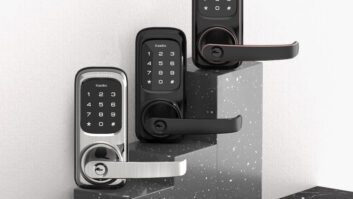“Sales of Best Buy private-label electronics soared 40 percent during the past fiscal year, which ended Feb. 28, even as the company’s overall sales and profits sank.” — The Wall Street Journal, April 27, 2009
The reason typically given for a retailer pursuing a private-label strategy — and who among the big ones hasn’t given it a try — is that they hope to make more money than they would by only selling manufacturer-branded product.
If you are a retailer, it is best to take the path of least resistance and sell what consumers come looking for. Usually a combination of “pull” brands (so named because they pull consumers to the store), as well as some “push brands” (the ones you have to push to sell as a result of lower brand metrics), works well.
Why sell a push brand at all? Traditionally, retailers covet them due to the expectation for higher margin associated with such product.
But what if there are no pull brands?
When it comes to consumer electronics, until something changes, the 1980s will be seen as the golden period not only for sales but also for pull-brand predominance. Clarion, Denon, JVC, Jensen, Kenwood, Pioneer, Marantz, Panasonic, RCA, Sony and on and on and on, were all brands with significant brand presence, or “aura” as I like to think of it. A retailer really had to think twice (no pun intended) before attempting to compete against them with their own private-label product.
So what about now? Well, at the root of brand aura is positive unaided brand awareness, reputation, price inelasticity and purchase predisposition, and by any measure there isn’t a brand out there today with metrics even close to the leader brands of 20 or 30 years ago.
Today, not only are all brands mostly (but not completely) “push,” the products themselves are too, which is why retailers like Best Buy and others are revisiting private-label strategies. Does that mean they will succeed? We’ll see, but being one more push brand among many is not much of an advantage.
Explaining how we’ve come to this unfortunate situation could fill this magazine, but the short answer is we just stopped promoting brands, including retail brands as well as the products they sell. We did this primarily because it cost money to establish, maintain and continually evolve a brand, and for the last 25 years the industry’s focus has been on low price with almost no regard for any other aspects of merchandising.
Many of you believe consumers are no longer brand conscious, particularly the younger ones. Oh really? Why do you think they spend all that time on their Facebook, MySpace and Twitter pages, not to mention their own Web sites? (Take a look at my son Kyle’s Web site, www.kylematthies.com, and tell me he isn’t self-branding.)
While each generation likes to see itself as different from previous ones, today’s consumers are more brand aura susceptible, with more ways to communicate and be communicated to available to them. They won’t, however, respond to a brand aura that isn’t there.
Some insightful manufacturers and retailers, either with us now or soon to be, will figure this out, and when that happens we will once again see a brand wave as big or bigger than the last one to roll through.
The question is: Will you be on it or under it?











